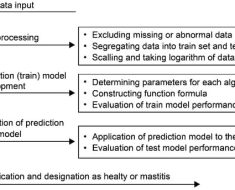This column is based on a narrated slide deck and longer article that you can view at ConnectSafely.org/moralpanic.
There has been a lot of ink spilled on doomsday scenarios about Generative AI, including a statement signed by several computer scientists and entrepreneurs saying, “Mitigating the risk of extinction from AI should be a global priority alongside other societal-scale risks such as pandemics and nuclear war.”
That’s pretty scary stuff, but there’s nothing new about negative scenarios around new technologies. Socrates, who lived from 469 to 399 BC, faulted writing for weakening the necessity and power of memory, and for allowing the pretense of understanding, rather than true understanding.
Fast forward to 1440 when Johannes Guttenberg invented the printing press, which was followed by a series of panics, including a group of scribes who, in 1474, petitioned the Republic of Genoa (now Italy) to outlaw the invention. Church officials were also quite concerned that the masses would soon be able to read the Bible and bypass them as was Swiss scientist Conrad Gessner who, in 1565, worried about what we now call information overload, claiming that reading could be “confusing and harmful.”
You may have heard the term “luddite” referring to someone who resists the introduction of new technologies, but in the early 19th century, there was a group of English textile workers known as the Luddites, some of whom physically destroyed looms and other labor-saving devices.
The sewing machine, introduced in the 1840s, brought about its own moral panic, mostly regarding women. Some worried that it would cause mass unemployment among seamstresses but there was also fear that economic independence for women, based on employment opportunities created by sewing machines, could lead to significant social changes, including shifts in family dynamics, marriage patterns, and overall societal structure.
Telegraph and telephone fears reminiscent of today’s concerns
The telegraph sparked concerns for some that the increased speed of information flow would erode leisure time, leading to heightened work pressure and a faster-paced life.
A 1906 newspaper cartoon predicted that the telegraph would cause us to lose personal contact with one another, and there were anxieties that the rapid transmission of information could lead to mental conditions caused by overstimulation and the constant influx of news. In 1858, the New York Times expressed concerns that the telegraph was leading to a decline in writing standards, as the necessity for brief and concise communication led to widespread abbreviation in writing. These concerns seem a lot like today’s worries about online communications.
In the late 19th century, there were widespread concerns about the telephone’s potential to cause deafness. It was also seen as a disrupter of social order. The integration of the telephone into private homes was criticized for its potential to disrupt established social order and lead women away from their traditional roles and responsibilities in the home.
Cameras, trains and radio
During the decades that followed the 1888 introduction of the Kodak camera, there were fears that it would end personal privacy. In 1890, The Hawaiian Gazette published The Kodak Fiend, which described a nefarious creature who “has taken you at a disadvantage and transfixed your uncouth position and passed it on to be laughed at by friend and foe alike.” In 1901, President Theodore Roosevelt chided a 15-year-old boy who tried to take his picture as he left church. The president ordered a police officer to block the camera and, as reported in the New York Times, he exclaimed “You ought to be ashamed of yourself! Trying to take a man’s picture as he leaves a house of worship. It is a disgrace!”
In the 1800s, the locomotive steam engine unleashed widespread fears and health concerns, including that the human mind was not designed to cope with moving at such high speeds, potentially leading to mental health problems, including insanity. The concept of ‘railway madmen’ emerged, with the belief that the motion and sounds of train travel could trigger madness in passengers. The steam engine was also perceived as a danger to the social fabric.
In the 1940s, radio was perceived as a threat to children. A 1941 Journal of Pediatrics cited a study of hundreds of 6- to 16-year-old children that concluded that more than half were severely addicted to radio and movie crime dramas, having given themselves “over to a habit-forming practice very difficult to overcome, no matter how the aftereffects are dreaded.”
21st century fears
As some readers may remember, in the lead up to January 1, 2000, there was a great deal of concern about the so-called Y2K or “millennium bug.” Many computer systems developed during the latter half of the 20th century used two digit dates for years, and there was worry that when the calendar switched to 2000, computers would stop working causing mass chaos. On assignment for CBS News, I spent that New Year’s morning at HP headquarters in Palo Alto where its CEO at the time, Carly Fiorina, assured the assembled press that nothing horrible had happened at midnight.
And, around 2004, there was widespread concern over online predators, in response, in part, to a weekly TV show called “To Catch a Predator.” Although there were and still are cases of adults using the internet to try to lure children and teens into sexual relations, actual cases of this resulting in physical contact were and still are relatively rare.
There are many more examples of moral panics across the centuries as I documented in an extensive article and Google slides presentation available at ConnectSafely.org/moralpanics, but what they tend to have in common is the fear that they will endanger our children, harm our bodies, degrade our morality, spell the end of privacy, damage our mental faculties, destroy our jobs or undermine our social relationships.
But these moral panics can lead to real risks such as causing us to focus on unlikely scenarios while failing to protect ourselves from more likely risks or the impact of these risks on vulnerable communities and individuals. Not all risks affect all people equally, and exaggerating the risk for everyone can interfere with protecting those who are most vulnerable.

I certainly agree that Generative AI and other new technologies have their risks, but I also think it’s important to put those risks into perspective and focus not just on the horrible things they can bring about, but how to manage those risks so that the benefits outweigh any negative consequences. And, to my fellow journalists, please refrain from that old adage, “if it bleeds it leads.” It’s important to advise the public about risks but not in ways that provoke counterproductive fears.
Larry Magid is a tech journalist and internet safety activist. Contact him at [email protected].


![Fluctuation-based Adaptive Structured Pruning for Large Language Models. (arXiv:2312.11983v1 [cs.CL]) Fluctuation-based Adaptive Structured Pruning for Large Language Models. (arXiv:2312.11983v1 [cs.CL])](https://aigumbo.com/wp-content/uploads/2023/12/arxiv-logo-fb-235x190.png)


